Much attention has been given to stress and pain suffered by vertebrate animals in intensively farmed environments. However, as the advantages of consuming insect protein become more widely understood, it may be time to consider the potential suffering of invertebrates too. In the UK, Europe and America, an industry that previously farmed insects for pet food is now scaling up[1] to meet a global need for a sustainable protein source: insects can produce an equivalent amount of protein to beef with 25 times less feed and substantially less water and energy. While the rest of the world have eaten insects for years, westerners are now waking up to the benefits and the entomophagy market is predicted to be worth €65 million in Europe alone by 2020. This could potentially reduce consumption of vertebrate meat, moving farming away from intensive agriculture towards higher welfare organic systems. Yet entomophagy can only make a significant difference if insects are mass-produced (Van Huis et al., 2015). What if these trillions of insects also suffer? If we neglect this possibility, it is feasible that we will move from one intensive poor-welfare system to another, where conscious organisms are inhumanely farmed in greater numbers than anything we have seen before[2].

There is evidence that many insects[3] are capable of relatively complex cognition. As well as the well-documented cognitive mapping ability of ants and honeybees (that famous ‘waggle dance’ that shows other bees the path to the prize), fruit flies also exhibit associative and second-order conditioning, and incidental and contextual learning (Greenspan and Van Swinderen, 2004). Even cockroaches, whom most of us would squash without hesitation, demonstrate place learning (Mizunami et al., 1998). Regardless, when it comes to consciousness and welfare we might consider “not, Can they reason? nor, Can they talk? but, Can they suffer?” (Bentham, 1972). An organism need not be conscious to experience stress, as seen in the mammalian developing foetus (Lay Jr, 2000). Dutch insect farmer Bert Nostimos has farmed crickets for pet food for 40 years and believes that “the stress is very high inside the boxes and, with medicine, you can reduce the stress”. Because medicating crickets with hormones is no longer acceptable when they are for human consumption, Nostimos reduces the cricket density in each box to help them cope. “Thinking like a cricket”, sometimes he even sleeps in the nursery to prevent his insects becoming ‘depressed’ (BBC, 2017).
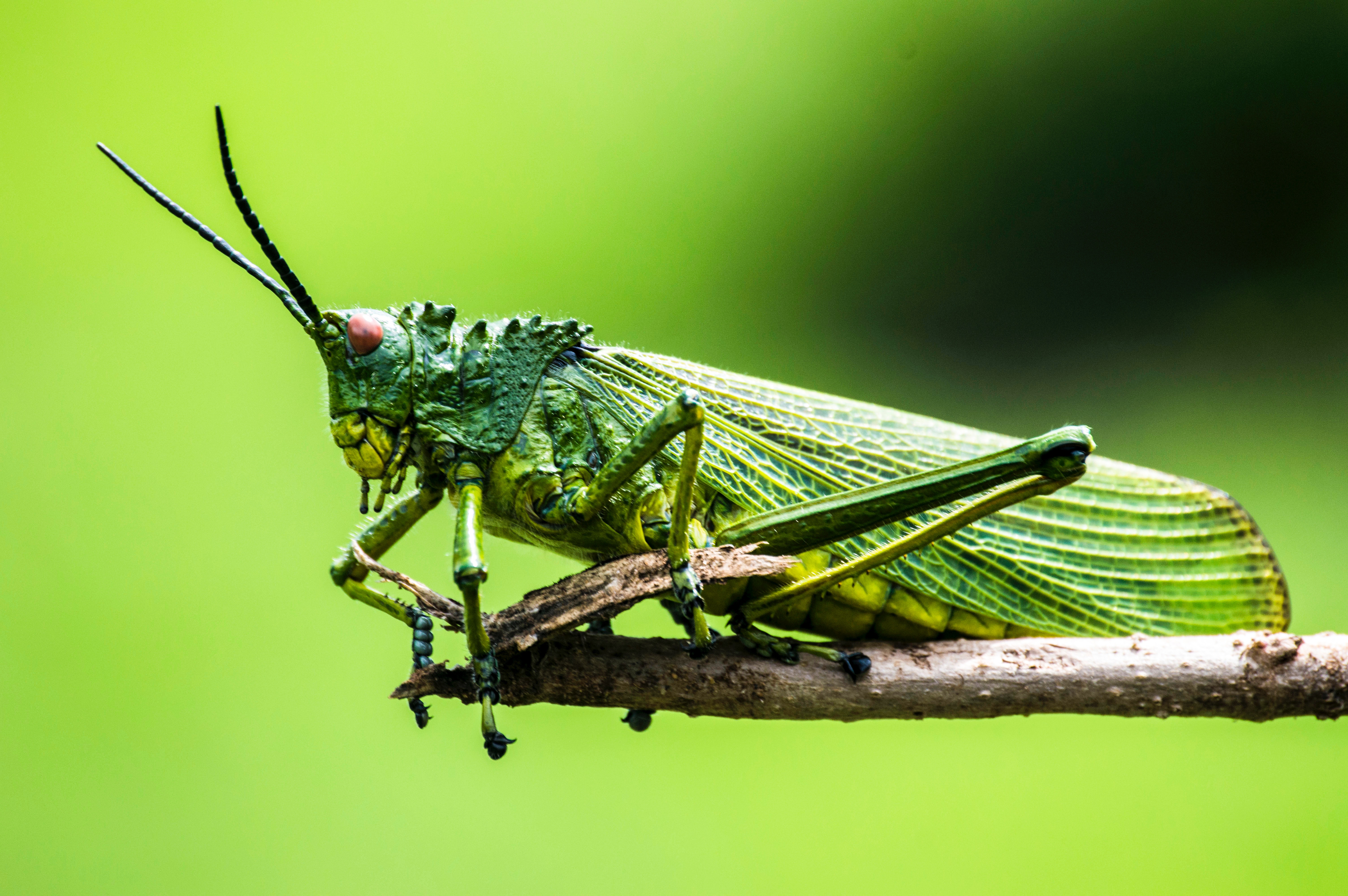
Nostimos’ belief in insect distress is not unfounded: Perić-Mataruga reviews how stressors cause specific hormonal changes in insects, which influence neurosecretory activity and synthesis of neurohormones (2006). Peptide hormones produced by neurosecretory cells, analogous to the hypothalamus of the vertebrate brain, regulate the insect’s endocrine and homeostatic functions. Just as in vertebrates, disruption of the insect’s homeostasis can impact its metabolism and thus its life energy. Furthermore, we know that many invertebrates have mechanoreceptors that fulfill the criteria for pain receptors (Broom, 2014). Numerous insects produce opioids (key to regulating mammalian pain), exhibit behavioural avoidance of sources of potential injury[4], or struggle when poisoned or restrained. All these responses could indicate conscious perception of the noxious stimuli and suggest insects experience conscious pain. It is now widely accepted that “the absence of a neocortex does not appear to preclude an organism from experiencing affective states” (Low et al., 2012).
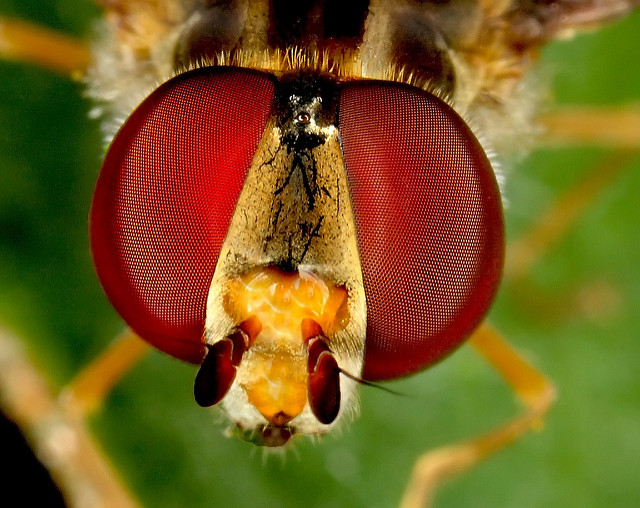
Are insects then capable of consciously ‘suffering’ as a result of nociception or stress? Neuroanatomical research indicates that it is possible. In vertebrates, the capacity for subjective experience is supported by the integrated midbrain and basal ganglia structures (Klein and Barron, 2016). The insect brain supports functions analogous to those of the vertebrate midbrain, suggesting insects may also have this basic consciousness. Klein and Barron state that even if insects cannot ‘self-reflect’, they do not merely react to the world but have a perspective on it, with “a unique phenomenological feel” (2016). However, Klein also acknowledges that “even those who think that sentience without self-reflection is possible are wary of including insects on our side of the line”.
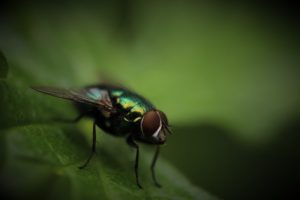
Even if insects can consciously process pain and distress on a comparable level to vertebrates, it might still be more ethical to farm them because, arguably, we are not depriving them of ‘a good life’ in the same way. While farmed vertebrates are slaughtered at a fraction of their natural life span, wild insects already live very short, arduous lives and suffer potentially traumatic, painful deaths. If we kill our farmed crickets humanely, freezing them first into torpor state, and farm them responsibly, we might consider their lives to be potentially better for being in captivity[5]. But how likely is this to happen? Despite the best efforts of scientific outreach programmes and education, willingness to eat insects does not necessarily equate to greater empathy towards ‘bugs’ and their wellbeing. There is now overwhelming evidence that fish feel conscious pain (Jabr, 2018) but we still find it hard to engage with these vertebrates as “brothers and sisters under the skin” (Panksepp, 2014). We don’t find it easy to empathise with animals that aren’t ‘cute and cuddly’, New York Times writer Nicolas Kristof openly admitting: “Like many readers, I don’t particularly empathize with chickens. It’s their misfortune that they lack big eyes.”[6] Lewis Bollard of the Open Philanthropy project laments the ‘dearth of funding’ around the welfare of non-charismatic animals like fish, chickens, and other animals that people don’t think about or relate to as easily (Bollard, 2017). Thus even if science proves invertebrates suffer, it will likely be even harder to garner public sympathy for cockroaches and crickets.

If future generations are comfortable with consuming insects en masse but care even less about their humane treatment than they do that of fish and chickens, there are potentially devastating consequences for welfare. Long-time insect farmer Nostimos has enough concern for the welfare of his crickets to increase their legroom, but scaling up the industry will mean most farmers will be new to insect production and unlikely to worry about the wellbeing of their stock during their two-week adult lives. It is therefore very possible that we will see severely stressed creatures crammed into tiny containers without medication. This situation is conceivably worse than that experienced by vertebrates, who at least have antibiotics as ‘technological sanders’ to help them cope (Rollin, 2007).
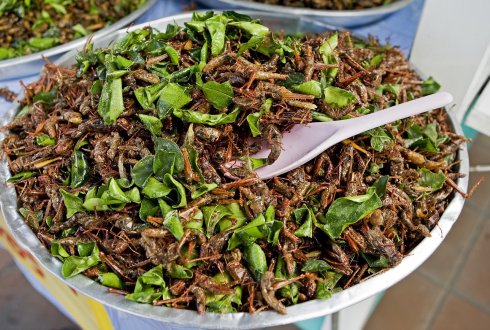
Furthermore, while humans understand insect life as relatively short and meaningless, it may not feel that way to the insect. Healy believes smaller animals can have superior cognitive abilities because they perceive independent stimuli when larger animals perceive continuous images: a blowfly is capable of the fastest processing (2013). Broom wonders if “Perhaps blowflies perceive humans as slow and inconsequential” (2014, p. 118). If our farmed insects do experience heightened awareness of stimuli, the actions of their slow human captors would be anything but inconsequential. Even if Healy is wrong, Rollin argues that animals with more basic cognition might cope less well with pain, because they are ”inexorably locked into what is happening in the here and now”. Without learned knowledge that the pain will end, “their whole universe is pain; there is no horizon; they are pain” (Rollin, 1989, p.143).
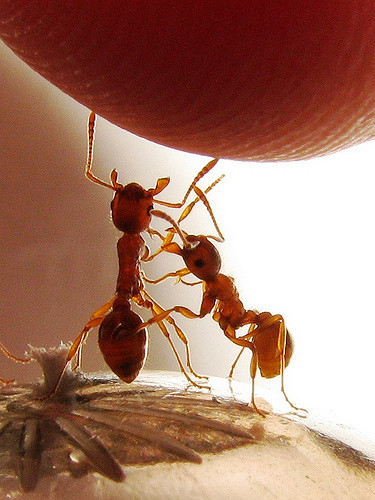
Nostimos may be anthropomorphising when he worries about the mental health of his crickets. But if future research proves that these trillions of insects do suffer and we have not addressed their welfare, the moral consequences are horrifying. The numbers involved, and the evidence of invertebrate stress and pain that we already have, should be more than enough to advocate the precautionary principle.[7] Absence of proof is not proof of absence when it comes to insect suffering and, assuming entomophagy grows as expected, we need to take measures to prevent this suffering. That means teaching insect farmers the importance of good husbandry, learning from the mistakes of vertebrate intensive farming, rather than repeating them. In an ideal world, we would afford ‘bugs’ the same measures of enrichment and responsible care that we should be affording other farmed living beings. However, that requires a fundamental change in how we understand, perceive and respect insect life.
References
The Bug Grub Couple, 2017. Television broadcast. Directed by BBC. UK: BBC.
Bentham, J. 1972. An introduction to the principles of morals and legislation, Wiley Online Library.
Bollard, L. 2017. Ending factory farming as soon as possible. In: Wiblin, R. (ed.) 80,000 Hours.
Broom, D. M. 2014. Sentience and animal welfare, Wallingford, CABI.
Greenspan, R. J. & Van Swinderen, B. 2004. Cognitive consonance: complex brain functions in the fruit fly and its relatives. Trends in Neurosciences, 27, 707-711.
Hanboonsong, Y., Jamjanya, T. & Durst, P. B. 2013. Six-legged livestock: edible insect farming, collection and marketing in Thailand, Bangkok, Food and Agriculture Organisation of the United Nations, Regional Office for Asia and the Pacific.
Healy, K., McNally, L., Ruxton, G. D., Cooper, N. & Jackson, A. L. 2013. Metabolic rate and body size are linked with perception of temporal information. Animal behaviour, 86, 685-696.
Jabr, F. 2018. It’s Official: Fish Feel Pain. Smithsonian.com.
Klein, C. & Barron, A. B. 2016. Insects have the capacity for subjective experience. Animal Sentience., 2016.100.
Lay Jr, D. C. 2000. Consequences of stress during development. In: Moberg, G. P. & Mench, J. A. (eds.) The biology of animal stress: basic principles and implications for welfare. Guildford and King’s Lynn, UK: CABI Publishing.
Low, P., Panksepp, J., Reiss, D., Edelman, D., Van Swinderen, B. & Koch, C. The Cambridge declaration on consciousness. Francis Crick Memorial Conference, Cambridge, England, 2012.
Mizunami, M., Weibrecht, J. M. & Strausfeld, N. J. 1998. Mushroom bodies of the cockroach: their participation in place memory. Journal of Comparative Neurology, 402, 520-537.
Panksepp, J. 2014. The science of emotions: Jaak Panksepp at TEDxRainier. YouTube: TEDxRainier.
Perić-Mataruga, V., Nenadović, V. & Ivanović, J. 2006. Neurohormones in insect stress: a review. Archives of Biological Sciences, 58, 1-12.
Rollin, B. E. 1989. The unheeded cry: Animal consciousness, animal pain and science, Oxford University Press.
Rollin, B. E. 2007. Cultural variation, animal welfare and telos. Animal Welfare, 16, 129-133.
Taylor, P. M., Pascoe, P. J. & Mama, K. R. 2002. Diagnosing and treating pain in the horse: where are we today? Veterinary Clinics of North America: Equine Practice, 18, 1-19.
Van Huis, A., Dicke, M. & van Loon, J. J. A. 2015. Insects to feed the world. Wageningen Academic Publishers.
Notes
[1] Insects are legislated in Europe under the Novel Food Directive (EU 2015/2283) under category ‘E’. Insect species included in products require Novel Foods dossiers as of 1st January 2018. There will then be a two-year transition period when it is possible to produce, and supply, insects and food made with insects that have been supplied prior to January 2018.
[2] In Thailand 20,000 domestic cricket farms produce an average of 7,500 metric tons of insects a year for home consumption and for the market (Hanboonsong et al., 2013). Like fish, the numbers are so great they must be measured in weight, not by individual insect.
[3] This post discusses insect rather than nematode sentience, although both are potential new protein sources. While nematodes can learn and react to stimuli, research suggests that they do not locate themselves in their environment. The behaviour of worms is a direct reaction to their immediate state, and there is no evidence of planning or of subjective experience (Klein and Barron, 2016). For a full list of edible insect species, see https://www.wur.nl/en/Expertise-Services/Chair-groups/Plant-Sciences/Laboratory-of-Entomology/Edible-insects/Worldwide-species-list.htm
[4] When considering the same behavioural avoidance to painful stimuli in horses, Taylor et al describe this as a highly ‘emotional’ response, suggestive of a “definite affective component to their nociceptive experience” (Taylor et al., 2002).
[5] Research by Welsh supplier Bug Farm Foods found that over 70% of people who class themselves as vegan or vegetarian will happily eat insects, because “they can be farmed and killed ethically” (https://www.bugfarmfoods.com/why-eat-insects/ Accessed Jan 31, 2018).
[6] This statement is made in Kristof’s 2012 column “Is an Egg for Breakfast Worth This?”, mid discussion of an investigation by The Humane Society of the United States of a battery-caged hen operation in Pennsylvania, Kreider Farms.
[7] The precautionary principle states that “when an activity raises threats of harm to the environment or human health, precautionary measures should be taken even if some cause and effect relationships are not fully established scientifically.” This can equally be applied to nonhuman animal health or wellbeing.
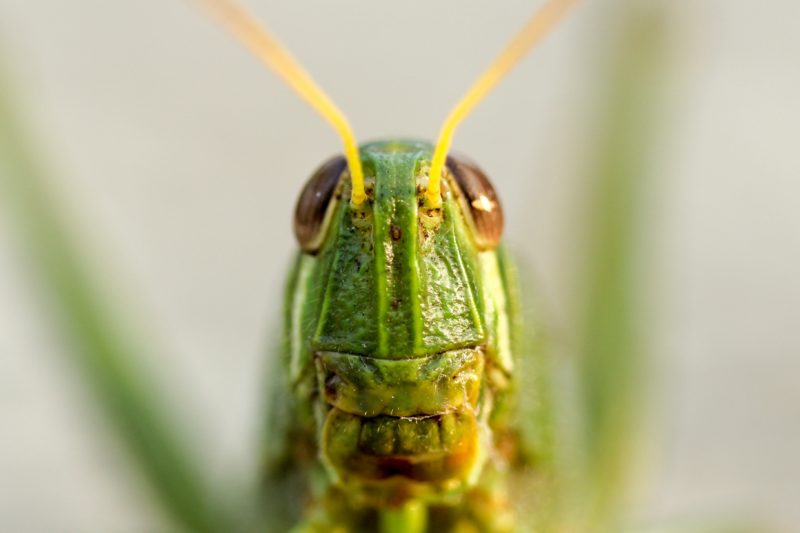
Hello Alice! This was very interesting! I wrote about the same topic with a bit different approach couple of years ago. You can read my blog post here: https://ilkkataponen.com/2015/01/04/the-animal-welfare-in-insect-farming/
Hi Ikka, I just read your blog post and really wish I’d come across this before I wrote this essay (which was originally a submission for my MSc – I think my grade would have been better had I included some of the references in your post!) I thought it was particularly interesting about the link between welfare and productivity – “the more the industrial environment resembles the natural environment of the insect, the more productive and healthy the insect will be”. Of course, supposedly this is the case for many farmed vertebrates too, but the industry has managed to find ways to bypass that using what Bernie Rollin calls ‘technical sanders’ to make animals ‘fit’ in unnatural environments and remain productive. Your blog hints that this might well happen with insects too… Let’s hope not! Thanks again for sharing.
This is really interesting, Alice. I feel like it would be easier to meet the needs of insects or other invertebrates in a small space (after all, the colonies in which they live are often very densely populated in a small space with the right conditions) but I think you are right to be concerned that people won’t bother! I think not enough is understood about the drive for their behaviour – for example do flying insects ‘need’ the space to fly if they don’t have to travel to find food or escape predation?
Absolutely. We’re just finishing a 12 week module on animal behaviour on my welfare course, and there hasn’t been any real reference to invertebrate behaviour. That said, I go to entomology conferences as part of my job and there are often presentations on social behaviour of bees, ants, etc and at Ecology meetings, behaviour of invasive insect species is a big topic. But like a lot of animal science, the findings don’t necessarily filter down to the public. I have some good friends who are entomologists so I’ll ask them – maybe I’m wrong!
It’s seems nothing is safe from our species.